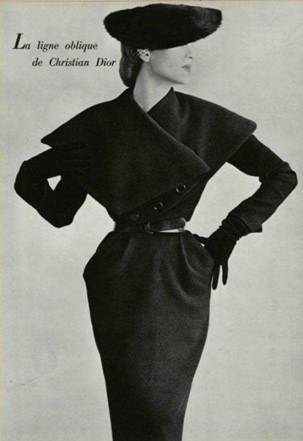With this article we inaugurate the column on vintage clothing
A prestigious collaboration has curated it: the fashion direction of the
Barolo Fashion Show
Talking about Vintage Clothing by declining the various styles would be simple, but let’s try to frame the topic in a more systematic way.
The danger that we are becoming increasingly aware of, especially in the economic sphere, where mere financial speculation has supplanted the real economy, is acceleration at all costs. Many have finally realized the need to regain possession of Time, of the things that matter.
In such difficult times it is normal to look back and try to understand where we went wrong, what needs to be changed to really improve, to have real Progress, with a capital “P” and not a simplistic acceleration towards irreparable damage.
Perhaps today’s real “revolution” would be to “go back”?
We don’t know, we willingly leave the discussion on the important issues to those who have the skills, but we feel the pressing need and even more the hope that a new long-term vision will soon arrive, a new way that solves the many problems of a “hyper” company.

The Oblique Line by Christian Dior – 1950s
Even Fashion, one of the historically least green sectors, has finally realized the need for change.
Not only the new generations of stylists and fashion designers but also many of the big brands are paying more and more attention to sustainability.
Aiming at the heart of the topic, Vintage Fashion, it must be said that not only do young people feel an exponential desire for a slower pace, for more precious fabrics, for carefully crafted stitching, for clothes cut by expert tailors, it is also the ‘aspiration to uniqueness.
Citing an old article, which appeared in “unsuspicious times” in Donna, the insert of La Repubblica, the fact that one of the strongest trends in fashion is Vintage “could seem like a contradiction in terms: this, however, confirms the importance of form over substance. Therefore the words of the writer Simon Reynolds are sobering when he says that “the future is dead. Retro is the future” and that the ubiquity of the past in contemporary culture is in fact a malaise that potentially undermines everything of quality and originality.”
Even today and certainly will be for the next few years, vintage clothing is “cool” and it is a circular project that belongs to everyone.
But what is Vintage?
It all originates in the USA. after the Second World War. After a long period of suffering, Americans discover consumerism, relegating used clothes to poor people, to those who lived on the margins of society. The transformation took place in the 1960s with the arrival of the hippies. It was precisely those belonging to this “fashion” who rediscovered old clothes to make them symbols of an era.
In New York in 1965, the first boutique called Vintage chic was opened which offered a careful selection of historical and antique clothes but which in reality were only a few decades old. It was an incredible success.
The New York Times newspaper, analyzing the situation, wrote: “It is intelligent women who have discovered this world, made of quality, fabrics, labor that the industry of this time is unable to offer”.
They could be words written last week!

However, many people do not fully understand the differences between vintage clothing and what can be defined as “retro”, there are significant differences.
The diversity lies in the historical authenticity of the piece. Rétro is something that has the appearance of being vintage, that winks at vintage. However, to be truly Vintage, a garment or fashion accessory must be an original object that is at least 20 years old (in England they consider it Vintage only if “old” by at least 25).
It refers to the age of the object, rather than the style of it. Therefore, even if a fashion creation might have an old style, it is not necessarily vintage.
It must also be said that not everything created between 1920 and 2000 (1995 in England), even if “technically” it is, has a Vintage charm.
A normal blouse from the same era, for example, does not have the same charm as a coat from the 1960s.
Regardless of the definitions, the fact is that today used clothes compete with fast fashion.
Statistics indicate a market in constant growth. For example, the volume of the used clothing market in the United States in 2018 was equal to 24 billion dollars: an impressive amount that US citizens spent in flea markets, in thrift shops, in online shops for second-hand clothes .
The evaluation of the importance of this market becomes even clearer if we compare it with how much market fast fashion has generated which, again in 2018, generated a 35 billion dollar market in the USA.
Therefore not only an excellent result for the used clothing market, but also the affirmation of a constantly growing trend that places second hand fashion as the main (or perhaps only) competitor for fast fashion.
INSIGHTS
La Repubblica – Fashion: the future is second-hand. Used clothes compete with fast fashion
Do you also want to be part of the 1Solo.com traders?
